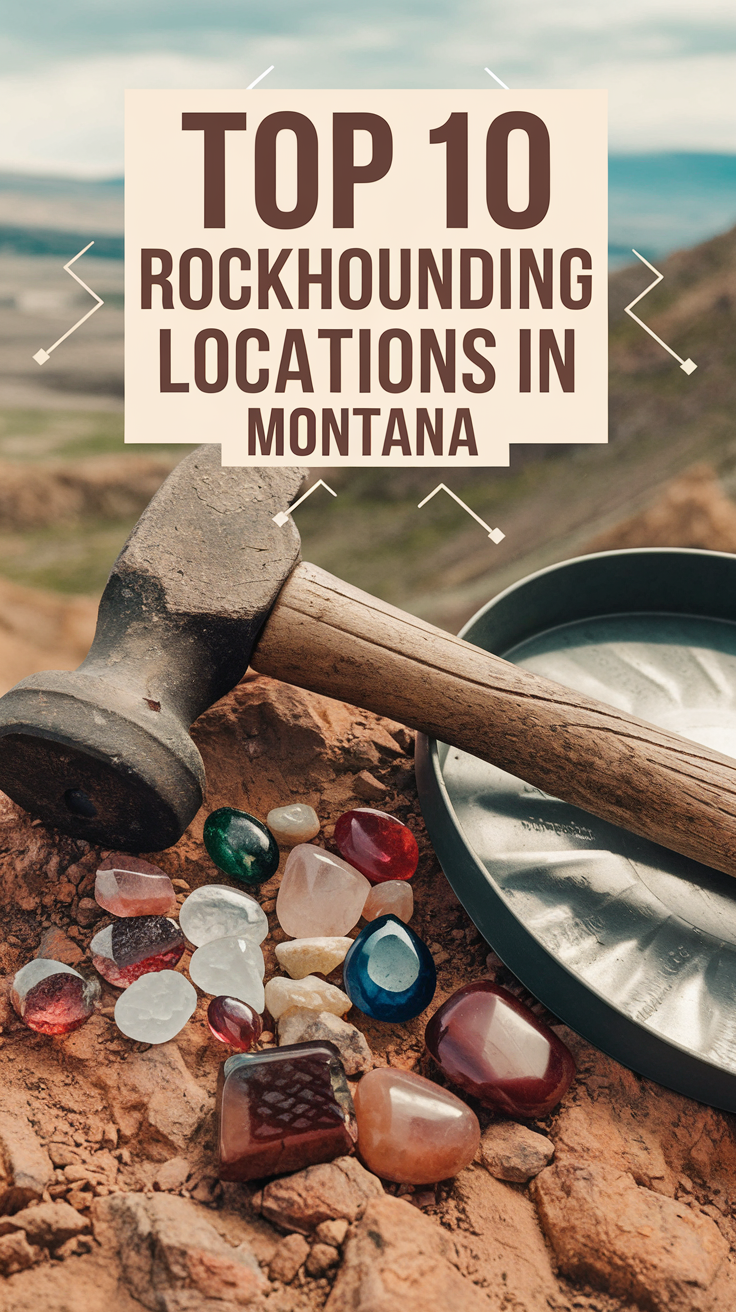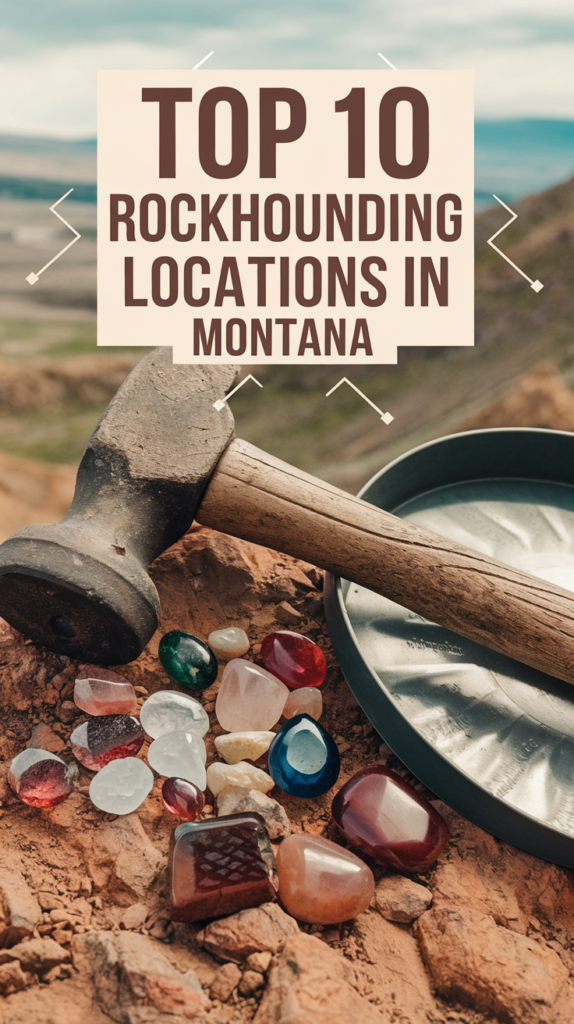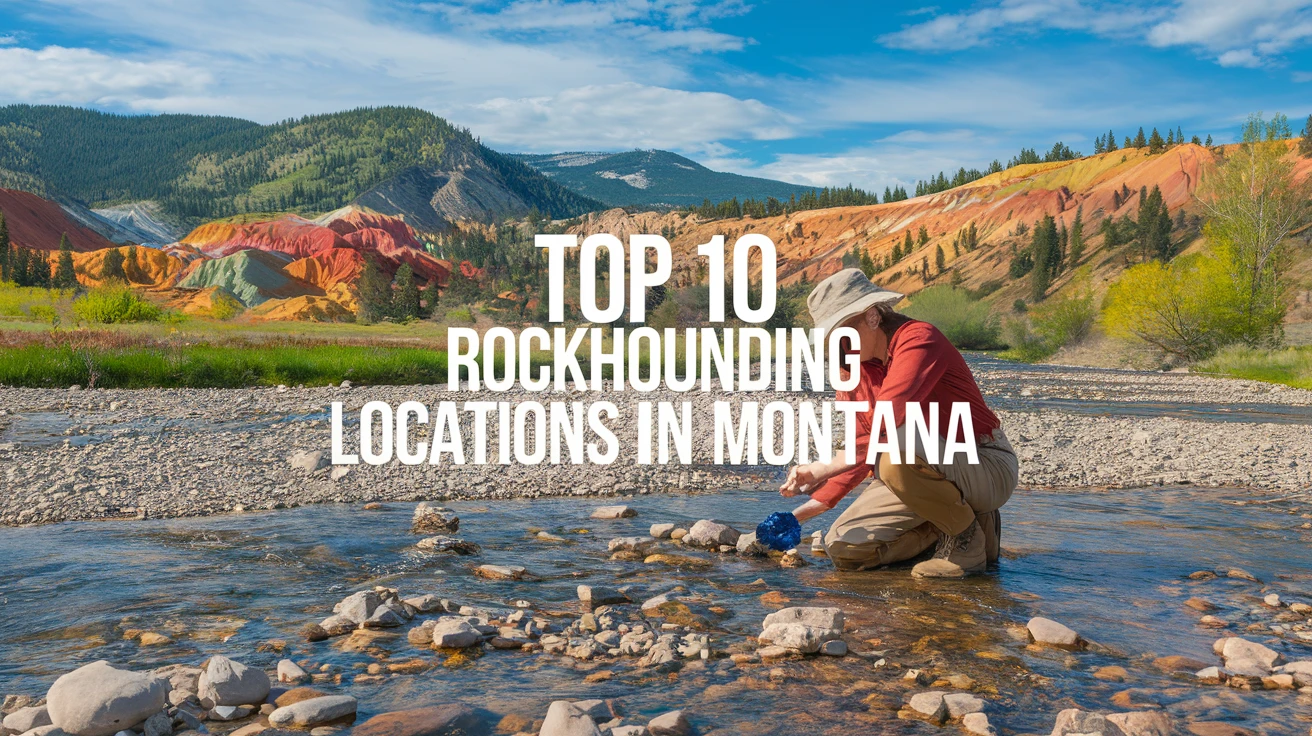
Montana’s vast landscape holds countless geological treasures, making it a paradise for rockhounds and mineral enthusiasts. From sparkling sapphires to stunning agates, the Treasure State truly lives up to its nickname. As someone who’s spent countless weekends exploring Montana’s mineral-rich terrain, I can tell you that there’s nothing quite like the thrill of unearthing your first gemstone or discovering a perfect crystal specimen. Whether you’re a seasoned collector or just starting your rockhounding journey, Montana offers some of the most rewarding locations in North America. Let’s explore the top 10 rockhounding sites that make this state a must-visit destination for mineral enthusiasts.
Essential Tools and Safety Guidelines
Before we dive into the specific locations, let’s cover the fundamental tools and safety measures every rockhound should consider:
Required Tools
| Basic Tools | Purpose |
|---|---|
| Rock Hammer | Breaking and extracting specimens |
| Safety Goggles | Eye protection from flying rock chips |
| Sturdy Bucket | Collecting and carrying specimens |
| Screening Equipment | Sifting through gravel for gems |
| GPS Device | Navigation and location marking |

Complete Rock Hounding Kit: Includes a **32oz rock pick hammer**, **three chisels**, **multi-function shovel**, **safety glasses**, **gloves**, and a **musette bag** for collecting **rocks, minerals, gems, and gold.**
Heavy-Duty Geology Tools: Forged from **high-carbon steel**, the **rock hammer** and **chisels** are **durable, rust-resistant, and impact-resistant**, perfect for **chipping stone, brickwork, and concrete.**
Compact & Easy to Carry: The **included musette bag** holds **all your tools and finds**, making it ideal for **fieldwork, hiking, and outdoor geology exploration.**
Perfect for Rock Collectors & Gold Prospectors: Whether you’re a **hobbyist or professional**, this **comprehensive kit** is essential for **rock hounding, gold panning, and fossil hunting.**
View on Amazon
As an Amazon Associate, I earn from qualifying purchases.

Dual-Hammer Prospecting Kit: Features a **3lb sledgehammer** and a **32oz rock pick hammer**, giving you the **strength and precision** needed for **rock breaking, chipping, and excavation.**
Heavy-Duty Carbon Steel Tools: Crafted from **drop-forged, high-carbon steel**, these tools are **shock-resistant, rust-proof, and built for durability** in **rock, concrete, and metalwork.**
Includes Essential Accessories: Comes with **two chisels, safety glasses, a magnifier, a multi-functional compass/whistle, and gloves** for **safe and efficient rock collecting.**
Ideal for Geologists & Treasure Hunters: Whether you’re **searching for gold, minerals, fossils, or meteorites**, this **geology tool kit** is perfect for **all skill levels.**
View on Amazon
As an Amazon Associate, I earn from qualifying purchases.
Safety Considerations
– Always inform someone of your rockhounding location
– Carry plenty of water and sun protection
– Wear appropriate clothing and sturdy boots
– Bring basic first aid supplies
– Check weather forecasts before heading out
– Carry a map and compass as backup navigation
Top 10 Rockhounding Locations in Montana
1. Philipsburg Sapphire Mines
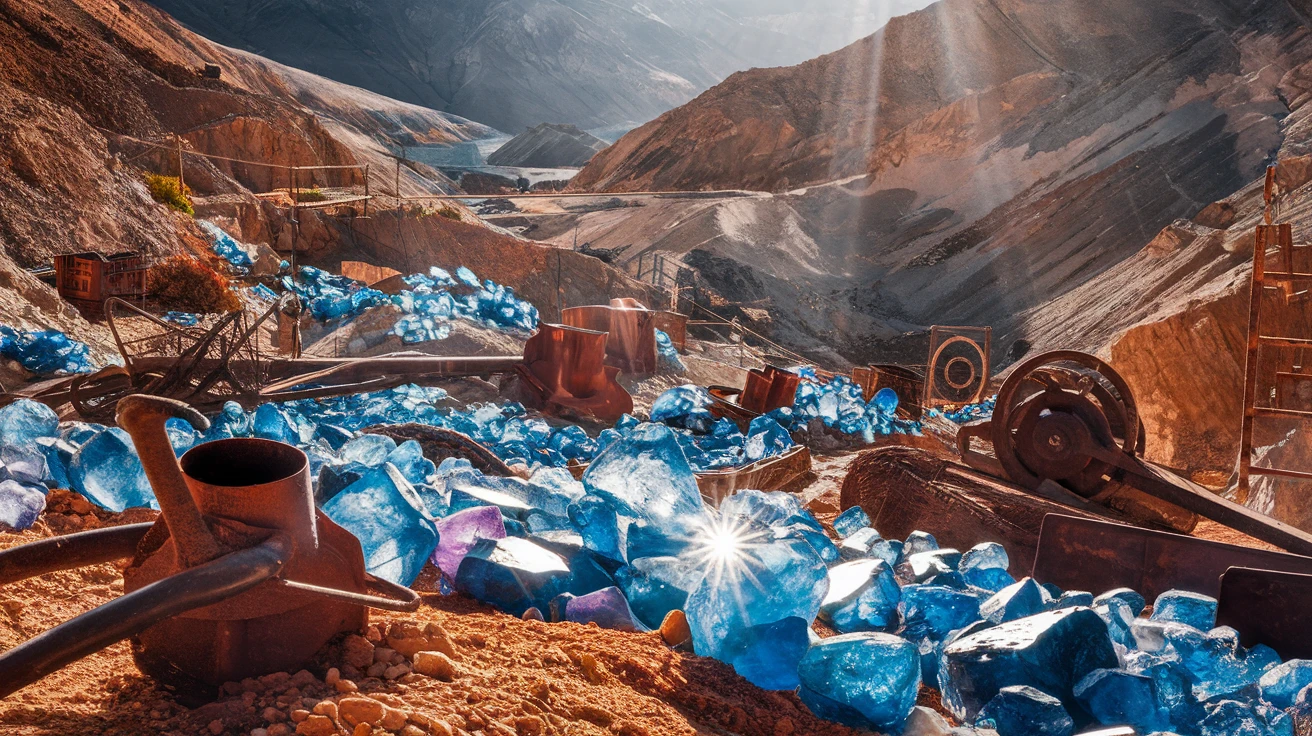
Located in western Montana, Philipsburg is world-renowned for its sapphires. I’ll never forget my first visit here â?? after just two hours of sifting, I found a stunning 2-carat blue sapphire! The mine offers both dig-your-own and pre-sorted gravel options. Best visited during summer months, this location requires a small fee but provides all necessary equipment.
2. Crystal Park
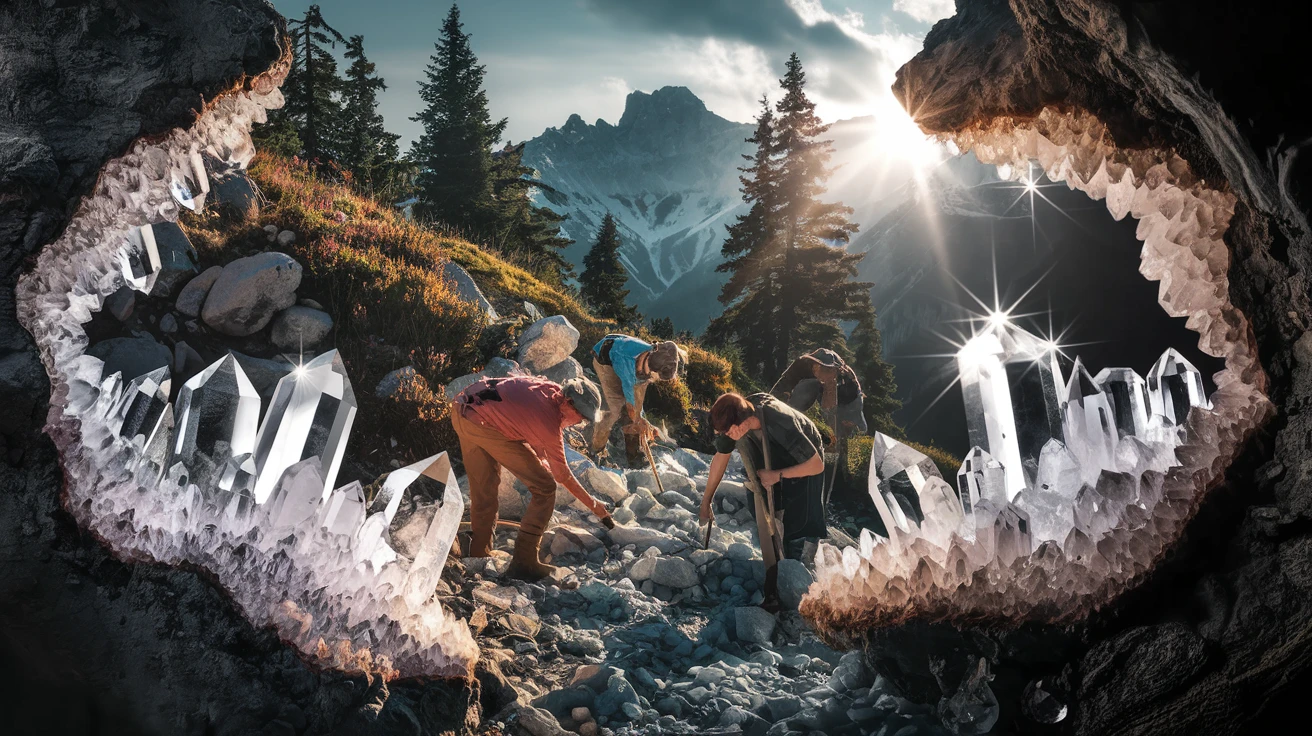
Situated in the Pioneer Mountains, Crystal Park is a designated rockhounding area managed by the Forest Service. Here, you’ll find exceptional quartz crystals and amethyst. The site sits at 7,800 feet elevation, making it accessible only during summer months. A day-use fee applies, but the facilities include picnic areas and restrooms.
3. Yellowstone River
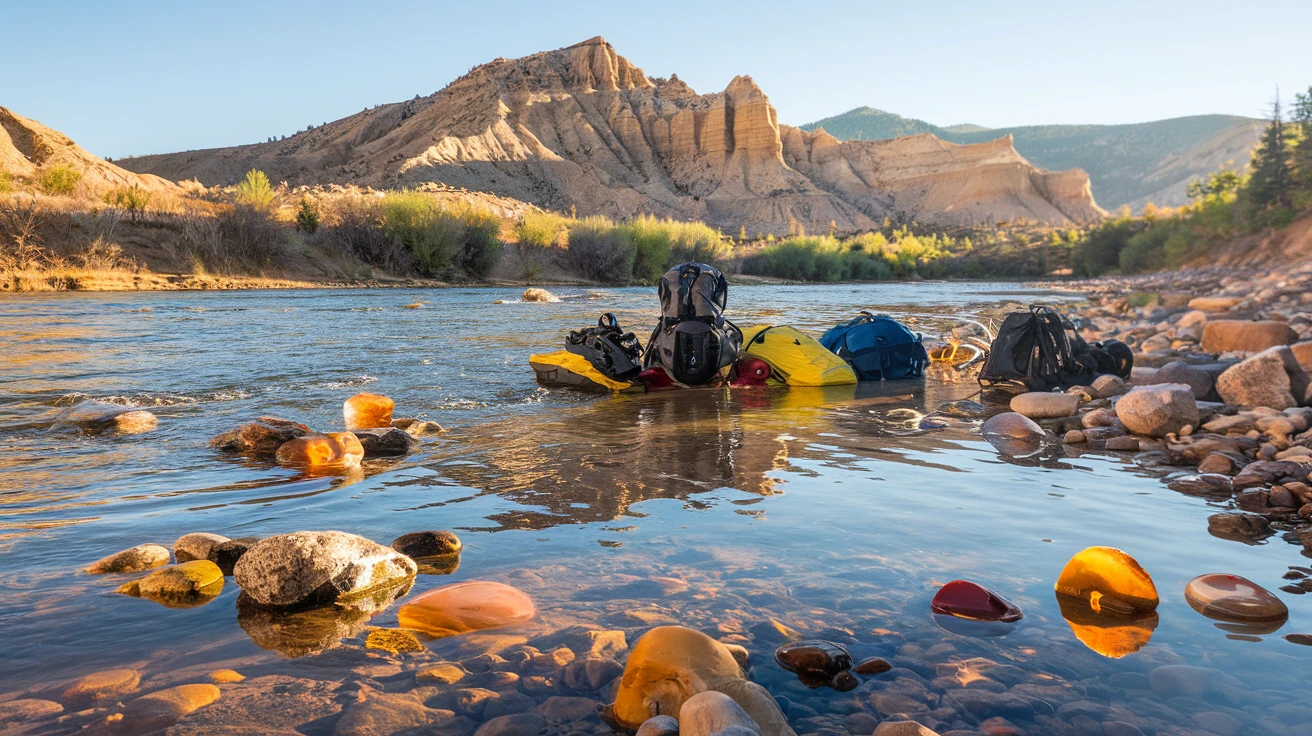
The river’s gravel bars are prime locations for finding Montana agates. Focus on areas near Columbus and Billings. Best hunting occurs in spring and fall when water levels are lower. Remember to check public access points and respect private property boundaries.
4. Ruby Valley
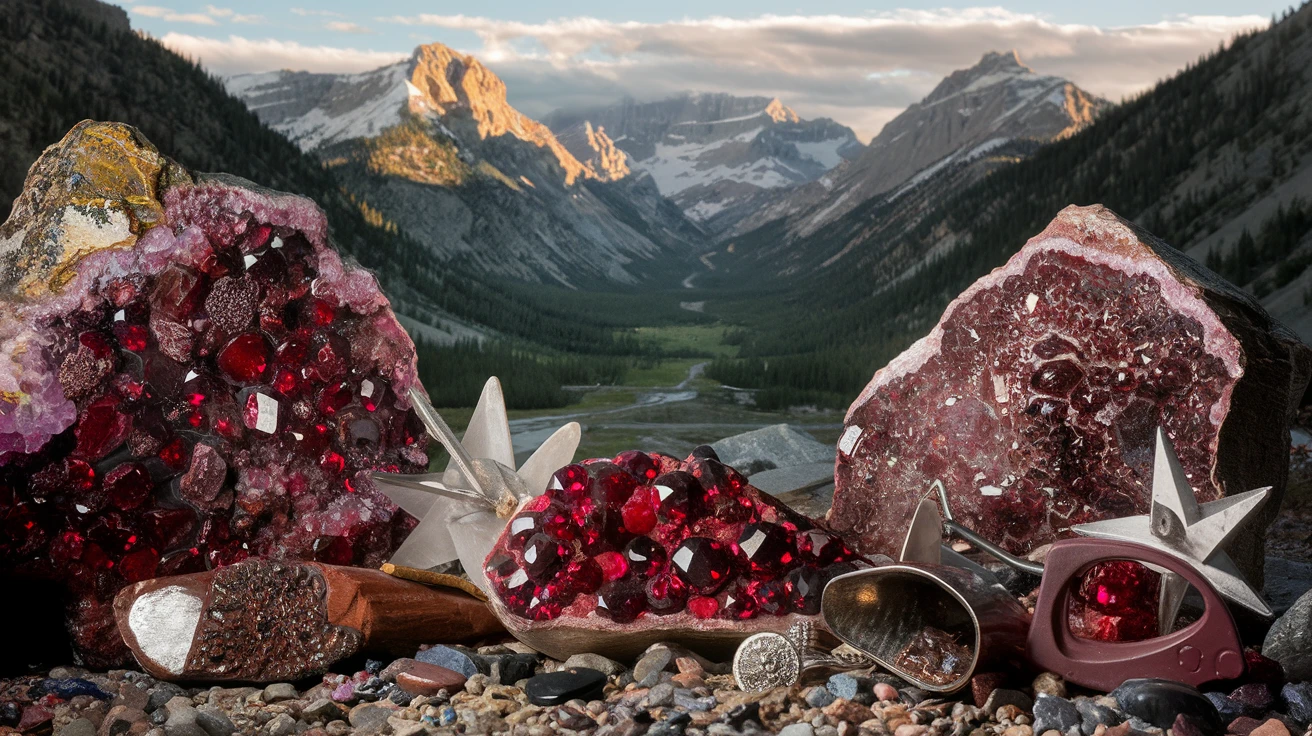
Despite its name, you won’t find rubies here, but the garnets are spectacular. Located near Alder, this area offers both stream and hillside collecting. I’ve had great success after spring rains when new material gets exposed.

Professional Metal Detector for Gold & Treasure Hunting: Features **five search modes**, including **All Metal, DISC, Memory, Jewelry, and Pinpointer** to detect **gold, silver, relics, and hidden metals.**
Upgraded Advanced DSP Chip: Equipped with the **2nd-gen DSP chip**, delivering **25% faster detection speeds, improved depth sensitivity, and higher accuracy**, reducing false signals.
Large LCD Display with Backlight: Intuitive screen displays **metal type, depth, sensitivity levels, and detection mode.** Backlight enables clear visibility in **low-light or nighttime conditions.**
Waterproof Search Coil for Beach & Shallow Water: The **IP68 waterproof coil** allows for **gold panning and treasure hunting in rivers, lakes, and wet conditions.** Note: **Control box is not waterproof.**
Ergonomic & Lightweight Design: Adjustable shaft (47.3″-55.2″) with a comfortable grip and **armrest support**, making long treasure hunts effortless.
View on Amazon
As an Amazon Associate, I earn from qualifying purchases.

Innovative Gold Panning System: The **XP Batea Kit** features a **20″ honeycomb-designed batea**, optimized for **fine gold recovery** with superior **rigidity and lightweight composite materials.**
Material Defragmenter for Faster Panning: Includes a **stainless steel defragmenter** at the center of the batea, **breaking down compacted material faster** and **saving time while prospecting.**
Optimal Gold Visibility: The **blue batea color** provides **enhanced contrast against gold**, making **identifying small gold flakes and nuggets easier.**
Comprehensive Gold Panning Accessories: The kit includes **a gold classifier (10mm mesh), 2 mini tubes, a magnifier, a suction bottle, and a pipette**, ensuring a **complete gold prospecting experience.**
Lightweight & Portable Design: At **only 1.7 lbs**, this **batea is lighter than steel versions (4 lbs)** while maintaining **high durability and efficiency.**
View on Amazon
As an Amazon Associate, I earn from qualifying purchases.
5. Missouri River Sapphire Area
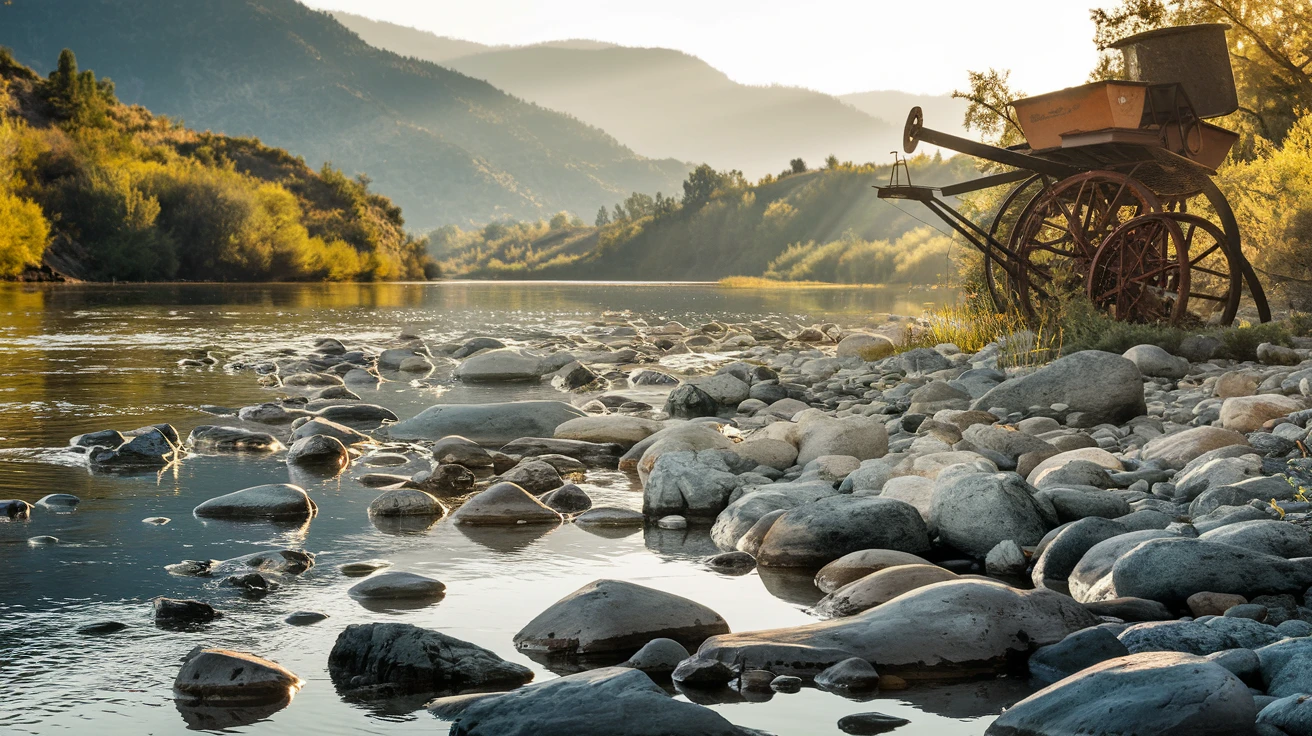
Near Helena, this historic mining area still produces beautiful sapphires. Access is through various fee-mining operations. The best time to visit is late spring through early fall. Bring water shoes and prepare for wet sifting.
6. Gem Mountain
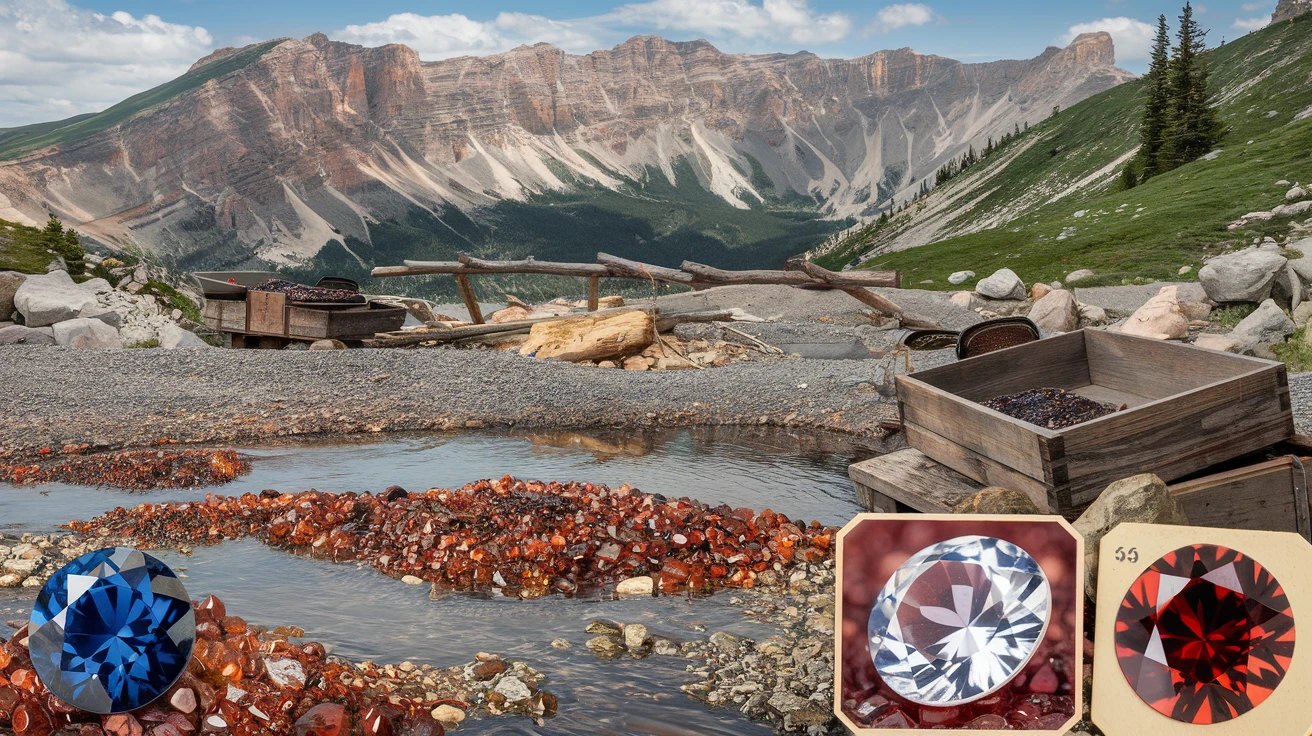
Located near Philipsburg, this commercial operation offers a different experience from the nearby mines. They provide excellent guidance for beginners and guarantee finds in their sorted material. Open seasonally from May to September.
7. Quartz Hill
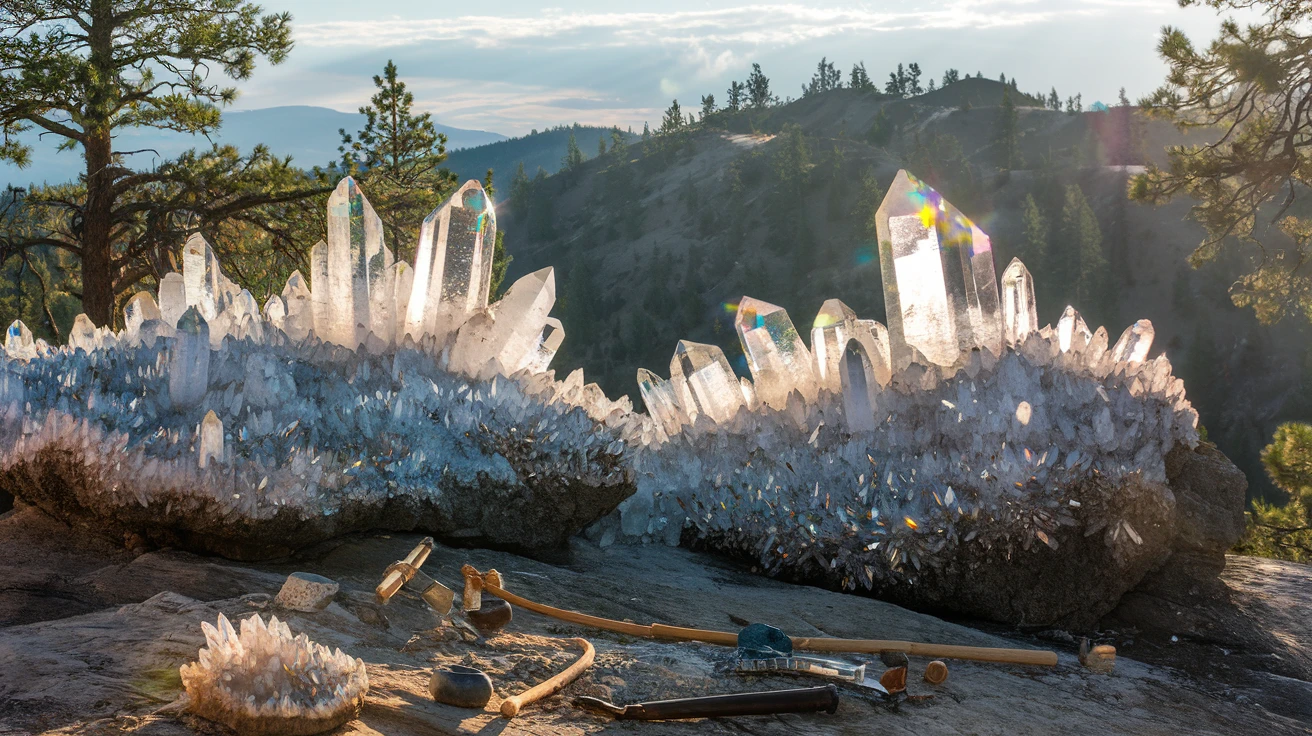
Near Virginia City, this location is famous for its smoky quartz crystals. Access requires a moderate hike, but the rewards are worth it. Best visited in summer months when snow has cleared.
8. Clark Fork River
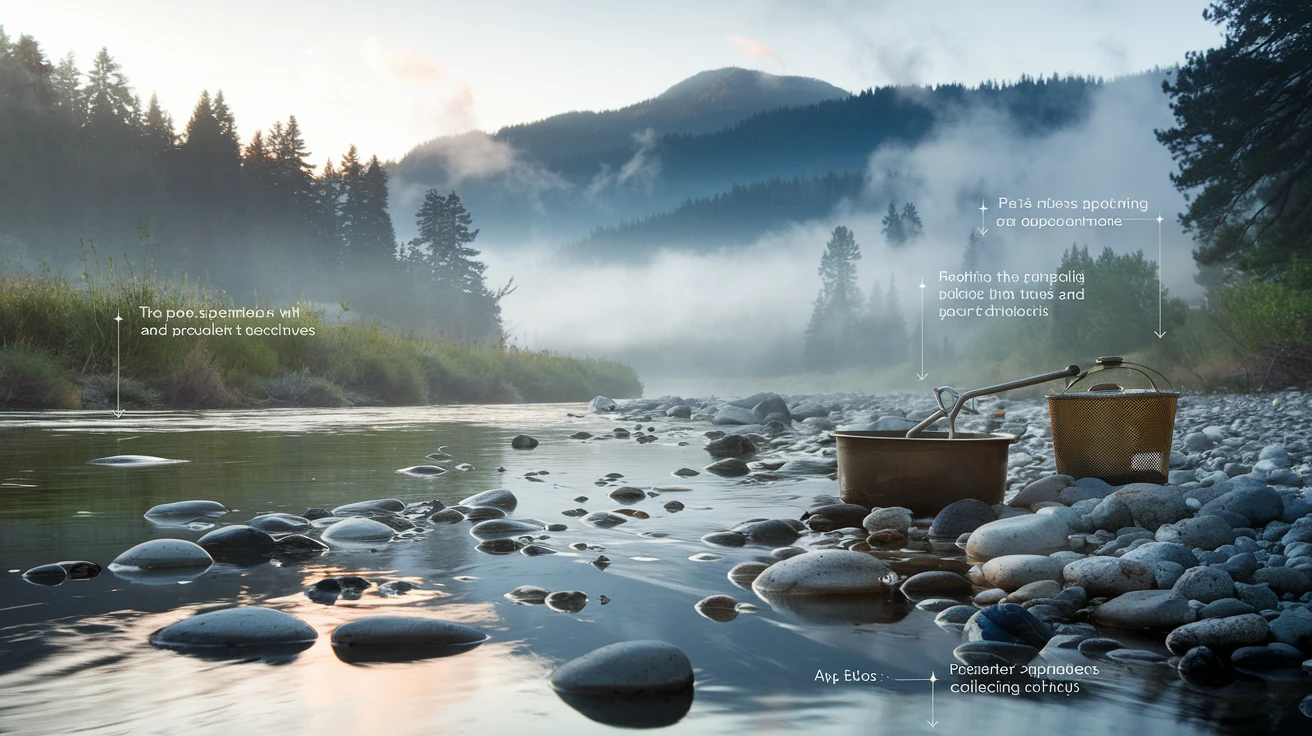
A prime location for finding sapphires and garnets. The best spots are near Superior. Public access points are available, but some areas require permission from claim holders.
9. Grasshopper Creek
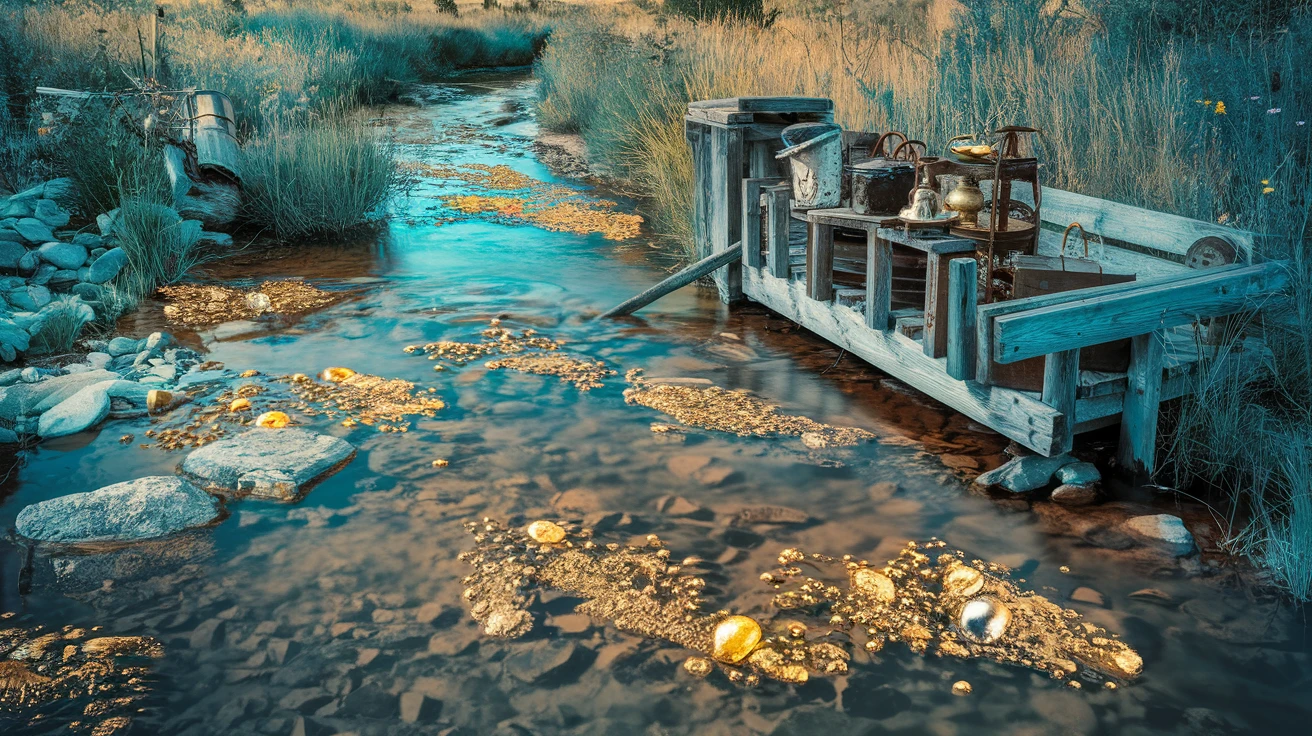
Near Dillon, this creek offers gold panning opportunities along with various minerals. The area has a rich mining history and still produces interesting specimens. Accessible spring through fall.
10. Livingston Agate Beds
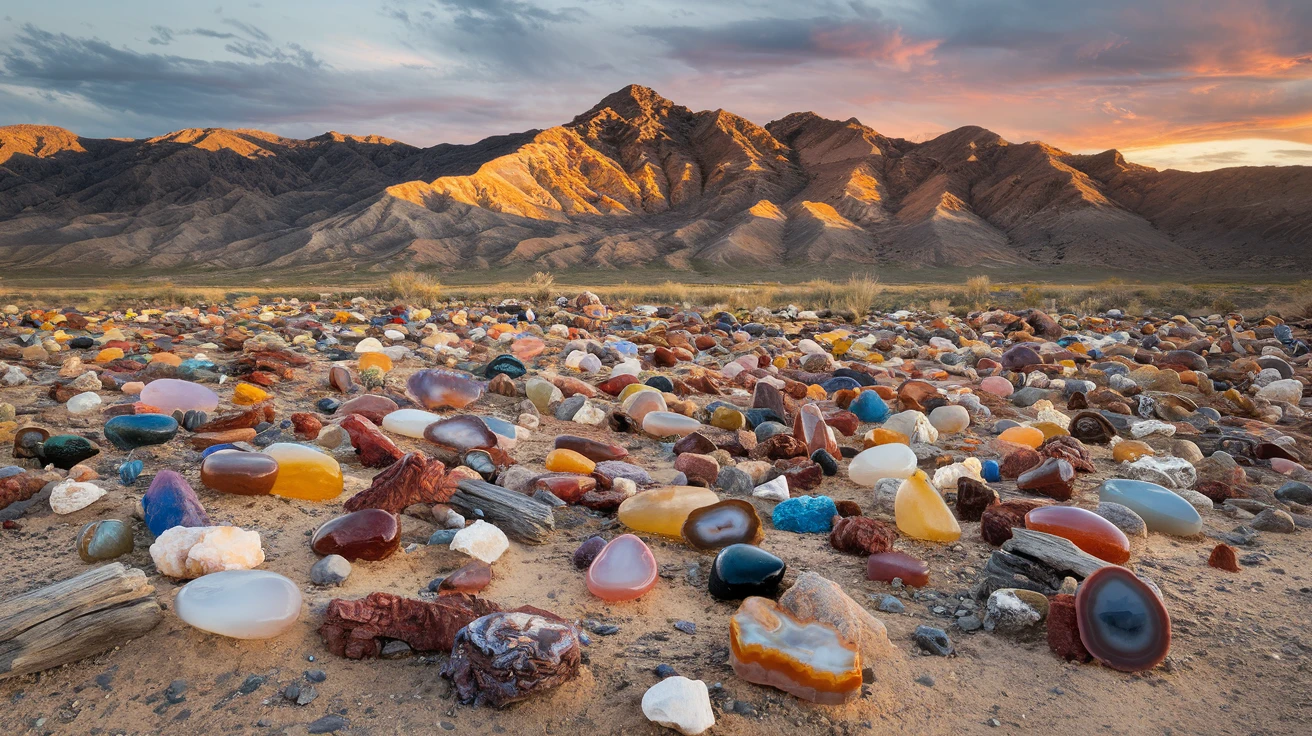
Famous for its Montana moss agates, this area requires some hiking but offers excellent specimens. Best hunting is after spring rains or in early morning when sun angle helps spot the agates.
Best Practices and Success Tips
Seasonal Guide for Montana Rockhounding
| Season | Best Locations | Special Considerations |
|---|---|---|
| Spring | River locations, lower elevations | Watch for muddy conditions |
| Summer | All locations accessible | Bring sun protection |
| Fall | All locations | Check weather reports |
| Winter | Limited to lower elevations | Many sites inaccessible |
Tips for Better Finds
– Hunt after rainstorms for better visibility
– Start early morning when sun angle is low
– Join local rockhounding groups for guidance
– Document your finds with photos and location data
– Study local geology before your trip
Legal Considerations and Regulations
It’s crucial to understand the legal aspects of rockhounding in Montana:
– Always check land ownership status
– Obtain necessary permits and permissions
– Respect claim markers and private property
– Follow quantity limits where applicable
– Pack out what you pack in
– Avoid collecting in National Parks
Conclusion
Montana’s rockhounding opportunities are truly exceptional, offering something for everyone from beginners to experienced collectors. The key to successful rockhounding here lies in proper preparation, respect for regulations, and patience. Remember that each location has its own unique characteristics and challenges. Whether you’re seeking sapphires, agates, or crystals, Montana’s diverse geological landscape won’t disappoint. Get out there, explore responsibly, and become part of the state’s rich rockhounding tradition.
Key Takeaways
- Always research locations and obtain necessary permits before rockhounding
- Bring appropriate tools and safety equipment for your specific destination
- Join local rockhounding groups for guidance and shared knowledge
- Document your finds and locations for future reference
- Respect private property and claim boundaries
Frequently Asked Questions
Do I need a permit to rockhound in Montana?
It depends on the location. Some areas require permits or fees, while others are free to access. Always check with local authorities or land management agencies before collecting.
What’s the best season for rockhounding in Montana?
Summer offers the most access to locations, but spring and fall can be excellent for finding specimens exposed by rain or snow melt.
Can I sell the gems I find?
Yes, but some locations may have restrictions on commercial collection. Check local regulations and claim rights before selling any finds.
What’s the most valuable gem commonly found in Montana?
Sapphires are typically the most valuable gems found in Montana, particularly the rare “Yogo” sapphires from the Yogo Gulch area.
Are there age restrictions for rockhounding?
Most locations welcome all ages, but some commercial operations may have minimum age requirements for safety reasons.
What tools are absolutely essential for beginners?
Basic essentials include a rock hammer, safety goggles, collection bucket, and sturdy gloves. Specific locations may require additional tools.
How can I identify the rocks I find?
Join local rockhounding groups, use mineral identification guides, or consult with local geology experts. Many commercial sites also offer identification assistance.
Is it safe to rockhound alone?
While possible, it’s recommended to rockhound with a partner for safety. Always inform someone of your plans and location.
How much does it typically cost to visit commercial mining sites?
Fees vary but typically range from $25 to $100 per day, often including equipment rental and guidance.
Can I bring my dog while rockhounding?
Some locations allow dogs, but many commercial operations don’t. Always check specific site policies before bringing pets.
